Albaicin Granada – Living in the Neighbourhood
In the previous post I described the serendipitous discussion with two clients that led us to drop everything and get on a plane to Spain to stay in an apartment in the Albaicin Granada neighbourhood. Although we had a serious glitch at Charles de Gaulle airport in Paris, we did get to Granada that evening just as the sun was going down over the Sierra Nevadas, the highest peaks in Spain. Granada is located on a high plain with mountains on all sides so the descent to the small airport was much steeper than usual, but carried out flawlessly by the pilot.
In the previous post I mentioned that I had been looking for apartments in Granada on TripAdvisor and that they were surprisingly cheap. What I did not mention is that I had been looking exclusively for apartments in what I would call the ‘touristy’ part of the city. This is where most guides, paper or online suggested, and some openly said to avoid the Albaicin Granada area. When we agreed to take the apartment I was not aware that it was in the Albaicin and in retrospect, I’m glad I didn’t because I might have done something really stupid like turn it down. But, I seldom look a gift horse in the mouth and I like adventure, so I’m thinking I would have said “yes” no matter where it was.
History of Albaicin Granada
So what’s the big deal with the Albaicin Granada? First a little history. Pretty well everyone knows that the Moors invaded Spain in 711 and stayed there for almost eight hundred years before the reconquista was finally completed in 1492 by the combined forces of Ferdinand and Isabella. 1492 was quite a year for Spain with Columbus ‘discovering’ the New World and in addition to subduing the Muslims, they decided to kick out the Jews for good measure. What many don’t know is that the last holdout was the Kingdom of Granada, which amazingly survived another two hundred and fifty years after nearby Cordoba was reconquered.
Now you don’t turn a population that has been practising Islam and speaking Arabic for eight centuries into good little Catholics speaking Spanish, overnight. While eventually, most would convert or be expelled, it was obviously a gradual process and that’s apparently how the Albaicin Granada came into existence, first as a refuge for Muslims fleeing Christian reconquests of other cities, especially Baeza, from whence the name. Then from other cities, most notably Cordoba. In effect the area became a barrio and incredibly remained so, almost unchanged, for eight hundred more years. Talk about your ‘established’ neighbourhoods. In 1984 three areas of Granada, the Alhambra, the Generalife Gardens and the Albaicín where designated as a UNESCO World Heritage Site. The Albaicín is described by UNESCO as “The residential district of the Albaycín is a rich repository of Moorish vernacular architecture, into which the traditional Andalusian architecture blends harmoniously.” Note that there seem to be multiple versions of how to spell the name. I’m using the one that seems to be most commonly used.
OK, it’s a World Heritage Site and has a thousand years of history, so what’s the problem? Well, up until recently Palmyra in Syria was also a World Heritage Site until ISIS showed up. If you visited Palmyra while they occupied it you might be posing for one of those ‘head on a stick’ photographs. Essentially, up until fairly recently the Albaicin was the wrong side of the tracks in Granada. Guidebooks describe the area as ‘sketchy’, with ‘ill lit streets’ and potential troublemakers lurking in the dark. Some say that tourists should avoid it at night – hard to do if you are staying there and arriving after dark, as we are about to. So let’s find out what’s fact and what’s fiction about the Albaicin Granada.
Well the first thing I can report is that the most dangerous thing about the Albaicin is getting there. After picking up our luggage we grabbed a taxi and gave the young driver the address – 12 Calle San Luis. He then proceeded to careen out of the airport and into the city at speeds up to 140 kph. The closer we got to the city centre the narrower the roads, but that didn’t slow this guy down. We were passing within inches of oncoming cars and pedestrians. The guy was a madman. Thank God we got to an area where the streets got so narrow that he had to slow down to what I would just call ‘frighteningly fast’. He came so close to hitting a couple of pedestrians that they screamed at him after we went by. Finally, he pulled up to the entrance to a small lane and indicated that this was the street and it was too narrow for his car. We were more than happy to get out. My hands were trembling as I handed over what seemed a trifling amount of euros for such an exhilarating ride. If you want a terrifying experience, just get inside this guy’s taxi and you’ll never settle for anything as mundane as a roller coaster ride again.
Below is a map of the Albaicin Granada, with Calle San Luis almost in the middle.
It looks like a major street, right? Actually it’s about ten to fifteen feet wide, and yes cars do use it. Why our crazed taxi driver was reluctant to go down it, I don’t know.
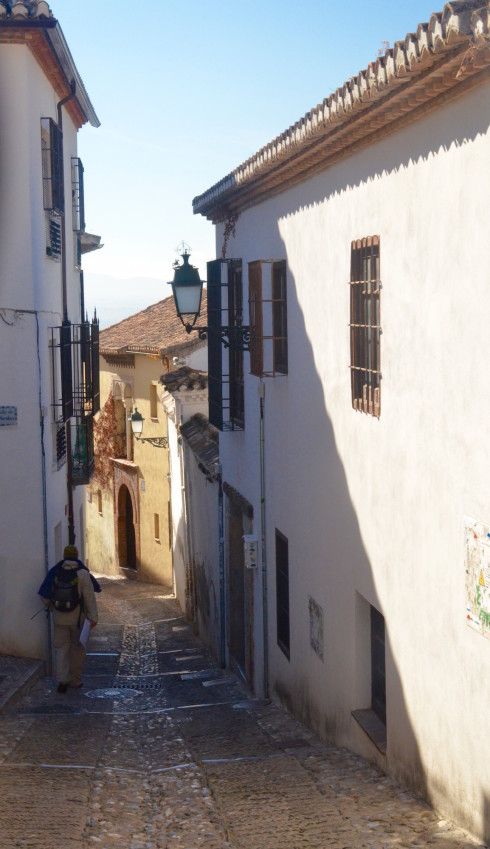
So we are here after dark and the first myth is dispelled. That’s a pretty decent sized street lamp.
The wheels of our suitcases make what seem like incredibly loud sounds as they clatter on the cobble stones. There is nary a soul around as we search out #12, but it’s not in the least scary. The scariest thing is avoiding the piles of dog shit that litter the street. The apartment’s housekeeper was to be waiting for us, but there’s nobody around so I call our client, who is in France and he relays a message to her. While we just hang around the locked entrance, I do notice that there are people around who have clearly noticed our presence. An elderly lady comes out from next door with a dog and I suspect it’s just an excuse to check us out. A group of obviously over-imbibed students comes stumbling by, arm in arm, each supporting the other. They stop and stare for about two seconds and then proceed onward.
Finally a motorcycle pulls up and an older woman gets off the back with keys in her hand. The driver is her daughter who speaks passable English. Now, for the sake of visual clarity, I’m going to use photographs I took the next day, to illustrate what we first saw as we entered what we expected to be a modest apartment in a moderately run down area of Granada.
An Apartment in Albaicin
This is the front entrance with a large wooden door.
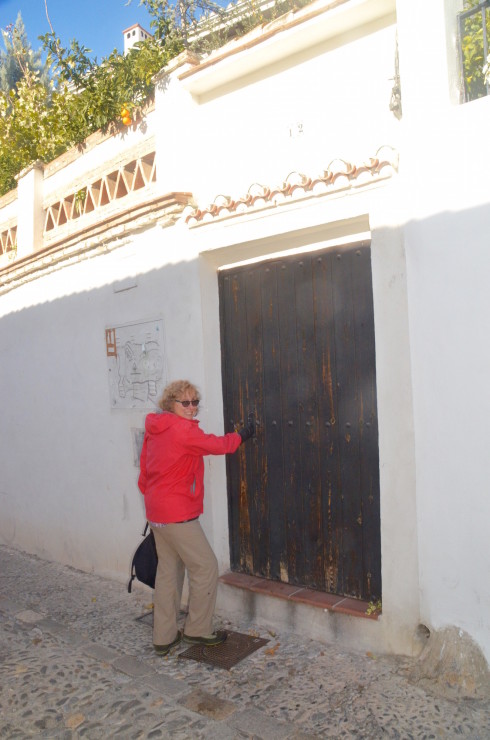
This is what you see after the door is opened. Pretty Spanish looking.
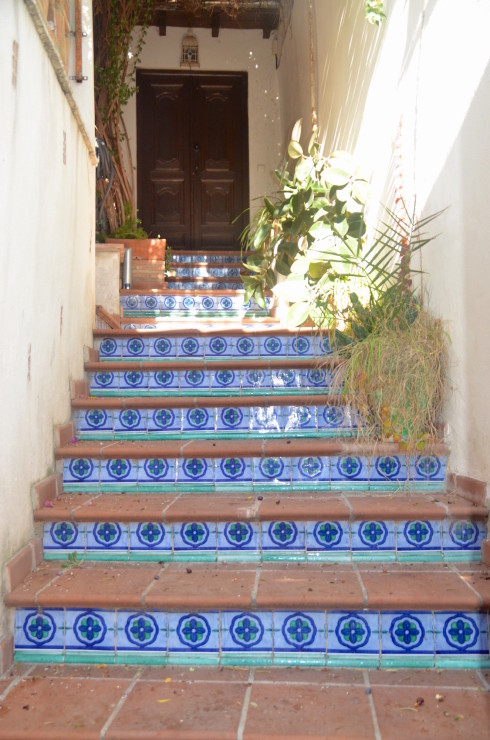
This is what you see after you climb the steps.
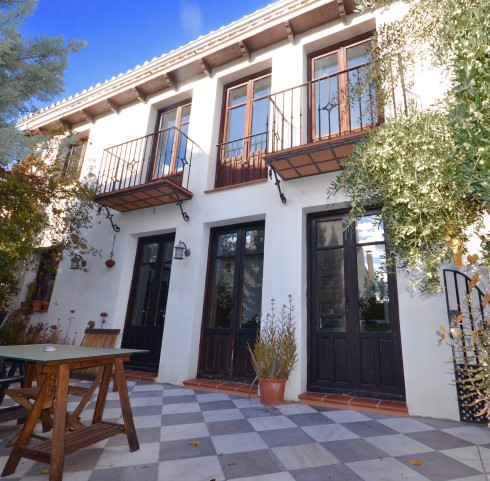
That’s an enclosed outdoor patio with orange and olive trees, herbs and flowers.
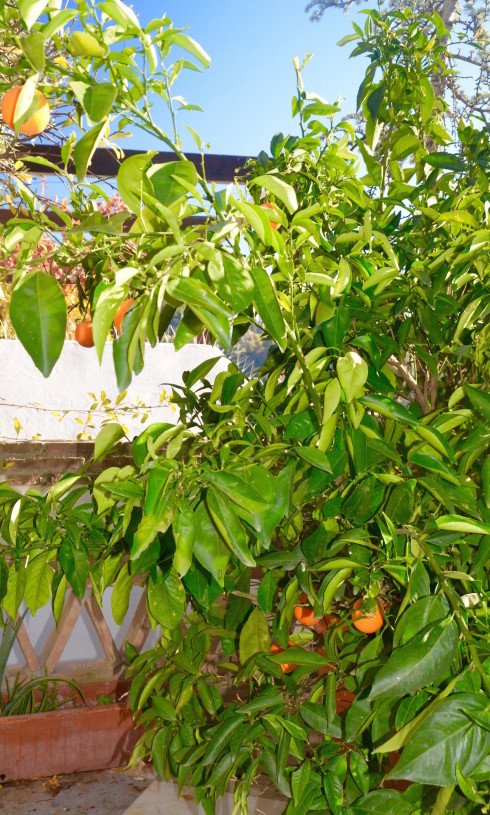
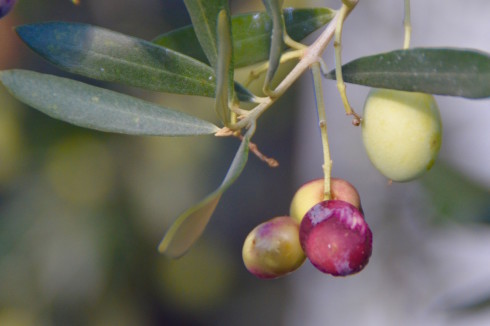
This is the living room.
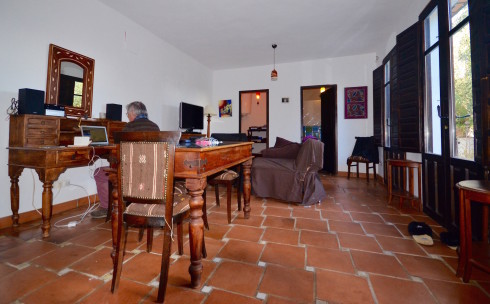
The kitchen with duelling cooking areas – my client’s are master chefs.
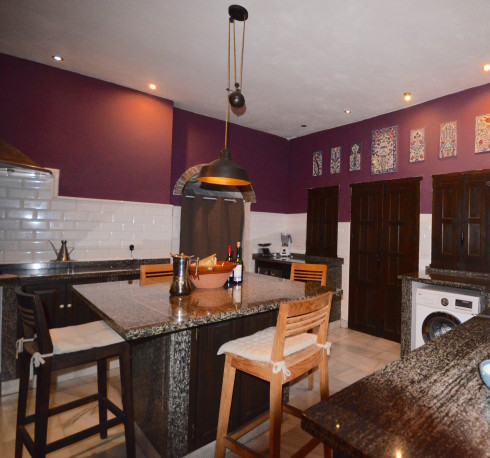
And the master bedroom.
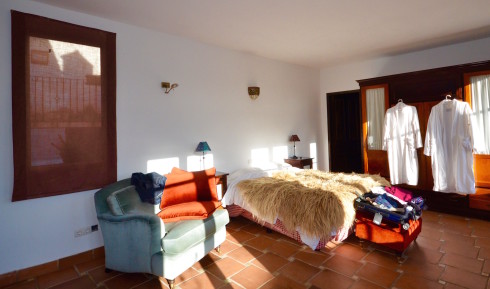
Pretty nice eh? Not your average rental accommodation.
Well, we’ve be in the air or on our feet for close to eighteen hours. I walk down the narrow lanes to a small shop that is still open and secure enough supplies for a nice meal – manchego cheese, fresh bread, Spanish olives which I think are the tastiest in the world, figs, dates, Spanish chorizo sausage which is much milder than the Mexican variety and of course beer and wine. I am slightly amused that the local Granadian beer is called Alhambra, considering that the people who built the Alhambra were abstaining Muslims.
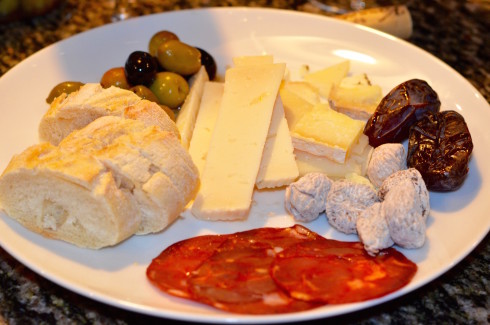
After sating ourselves on these great Spanish offerings we discover that there is yet another floor to this place. It opens onto an open air patio four stories above the street. Here’s the view that greeted us on this first night.
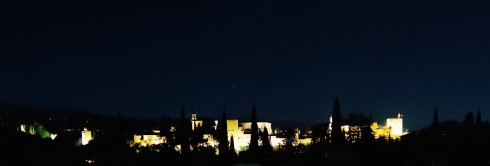
Yes folks, that’s the Alhambra directly across the way.
Here’s to living large in the Albaicin Granada! Join us as we explore the city tomorrow starting right here in the Albaicin.

